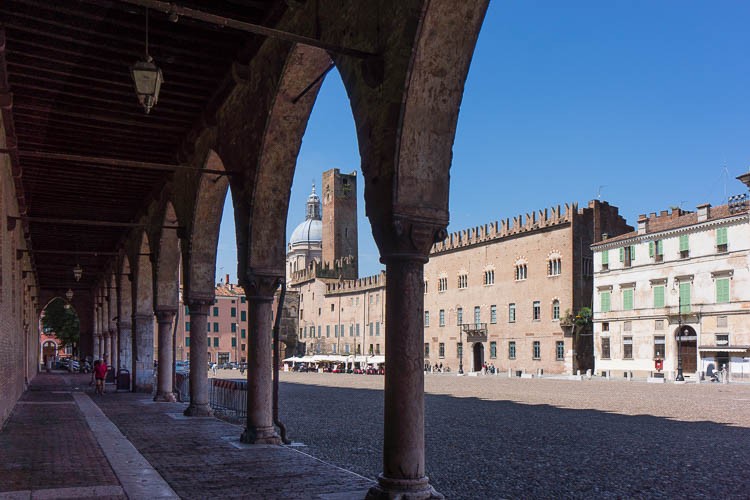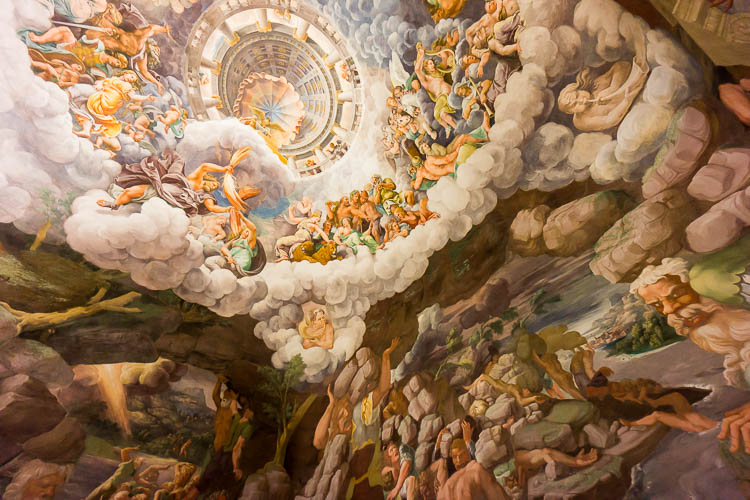Where to Go in Italy, 2016: Mantua, the Italian Culture Capital
I spend about 5 months of each year in Italy. On my way back to California I spend that awful time in Airline steerage recalling the number of compelling things I have discovered over the course of the past year. Italy is about the size of Arizona or New Mexico. How do they pack so much in there?
Take Mantua. Been there? No? Consider this: Mantua has been named the Italian Culture Capital for 2016. The city surrounded by lakes beat out 24 cities vying for the honor; last year's winner, Matera, had but 5 competitors.
What does this mean for Mantua? Well, you can bet that enormous piles of money have been filtered through politicians' pockets before finally trickling into city coffers. What's left, a million euros they say, will go towards spiffing up the Renaissance city, planning special events, and getting it ready for the throngs of visitors who will have read this post, tucked a passport and clean undies into a tattered carry-on bag, and taken off for the wild outback of Lombardy.

Mantua is an ancient city; there's evidence for settlement of the area since 2000 BC or so. By the 6th century BC it had become an Etruscan outpost. The Romans conquered it between the two Punic wars. But it was the Gonzaga family that ushered Mantua into its golden age. Ludovico Gonzaga started awarding contracts around 1447 and lured Andrea Mantegno into the position of court artist around 1460. Things took off from there.
Today the palaces, piazzas and religious edifices these Gonzaga folks left will stun and amaze you. The Palazzo Ducale di Mantua, the Ducal Palace, has a whopping 500 rooms. The famous one is the frescoed Camera degli Sposi, the bridal chamber hosting 15th century works by Andrea Mantegna. Spend a day gawking.
Then, in early evening, take a seat at any bar that strikes your fancy. Have a drink. It's likely they'll put some (free!) food on the table so you don't get so tipsy. If you're there at the right time there might be some live music. Enjoy the slow life. It won't cost you much.
When you feel like some serious eating, take advantage of Mantua's role as a European Capital of Gastronomy. Sit in a restaurant planted in a historic piazza and dig into a bowl of the famous pumpkin stuffed tortelli or have one of Mantua's classic rice dishes. Then, if you have room for a main course, order the pike in green sauce.

Guidebooks will tell you to enjoy Mantua on a day trip or some other such drivel. It's obvious that writers in the employ of these publishers are daft--or have never been to the city. Like many surprisingly robust tourist destinations, Mantua comes alive after the tourist buses start lumbering from the parking lots.
You could easily spend a week in Mantua. But here's the thing: leave the Palazzo del Te for the end of your visit. Federico II Gonzaga's pleasure palace is quite stunning, sexy even. Maybe it's a guy thing, but if the mannerist paintings of Giulio Romano don't move you, especially in the room engulfed by The Fall of the Giants, you certainly must be prone to a certain kind of blindness. Get help immediately. I mean, look at the picture. This is a standard *corner* of the room. You won't believe your eyes.
(Don't believe them, because Giulio Romano has control of them and that won't stop until you leave the room, trust me.)
On the off chance you can't find a compelling way to spend the remainder of your week, why not head out for a couple of very short drives?
A half hour drive southwest of Mantua gets you to the walled town of Sabbioneta. Founded in the 16th century by Vespasiano I Gonzaga, it's on the UNESCO World Heritage List in "recognition of its perfect example of practical application of Renaissance urban planning theories."
So instead of the type of streets and alleyways you find in a typical hill town--built atop the reliable and easy gradients provided by existing animal trails--in Sabbionetta we see a grid system of streets laid out on a perfectly flat surface.
You can also poke around in the Jewish Ghetto, known for its Hebrew printing press, and stick your head inside the Teatro all'antica, a sort of Roman-inspired place to see plays and musical events and the second-oldest surviving indoor theater in the world. Of course there are plenty of restaurants serving decent grub (we recommend the Osteria La Dispensa on Via Galleria 3) and plenty of churches to fuel your spiritual side.
A church also figures in the second recommended drive. Point your rental car west along the river to the nearby town of Grazie di Curtatone. You'll easily find Santuario della Beata Vergine Maria delle Grazie where you might be surprised to see a crocodile hanging from the rafters if you didn't read about it here. Yep, right in front of you in a place nobody outside the territory knows is an oddity you can discuss with your friends and enemies while you show them the pictures and observe the disbelief on their faces.
But a dangling croc isn't the end of it. The nave is lined with life-size mannequins representing episodes of danger averted by divine intercession.Every available space between the niches they occupy is taken up by ex-votos: hearts, hands, eyes, breasts, and pestilential buboes recalled from the age of the plague.
It's pretty darned impressive.
Italy is a miraculous place. Sometimes, if you dig hard enough, you can hardly believe your eyes.

